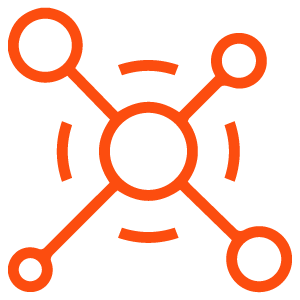#Future #ECommerce #Custom #Sites #Revolutionizing #Online #Retail
As we continue to advance further into the digital age, e-commerce is evolving at an unprecedented pace. The transformation of retail from brick-and-mortar establishments to online platforms has redefined shopping behaviors and consumer expectations. One of the most exciting developments in this arena is the rise of custom e-commerce sites, which are revolutionizing how businesses interact with customers, streamline operations, and enhance the overall shopping experience.
The Shift Towards Customization
Understanding Custom E-Commerce Sites
Custom e-commerce sites are tailored online platforms built to meet specific business needs and customer preferences. Unlike off-the-shelf solutions that offer standardized templates and features, custom sites provide flexibility, ensuring businesses can implement unique branding, workflows, and functionalities. This level of customization allows companies to present their unique value propositions, thereby differentiating themselves in a crowded marketplace.
Benefits of Customization
Deciding to invest in a custom e-commerce solution offers numerous advantages:
-
User Experience (UX) Design: Custom sites prioritize UX, enabling businesses to design intuitive interfaces that cater to their target audience. Businesses can consider customer journey mapping to ensure every step from product discovery to checkout is seamless.
-
Scalability: A custom site can grow as a business does. Companies starting with a few dozen products can expand to thousands without being hindered by limitations of pre-built solutions.
-
Flexibility: With a custom platform, businesses can easily integrate various tools, such as CRM systems, inventory management solutions, or payment gateways, tailored to their specific operational needs.
-
Branding: A distinct design helps businesses establish a strong brand identity. From color schemes to unique layouts, custom sites allow businesses to showcase their ethos and appeal to their target demographic dynamically.
-
SEO Optimization: Custom e-commerce platforms can be optimized for search engines better than standard templates, improving visibility and organic traffic.
- Performance Optimization: Businesses can enhance site loading speeds and responsiveness, ultimately contributing to higher conversion rates.
The Importance of Personalization
In an increasingly competitive e-commerce landscape, personalization has become a defining trend. Custom e-commerce sites enable businesses to tailor their offerings and user experience based on individual customer preferences. This personalization can significantly increase customer loyalty and improve conversion rates.
Techniques for Personalization
-
Product Recommendations: Algorithms can track user behavior to suggest products based on past purchases, browsing patterns, and preferences.
-
Dynamic Browsing Experience: Tailoring the content displayed on the homepage or product pages based on user behavior can enhance engagement and sales opportunities.
-
Targeted Promotions: Businesses can create dynamic promotions and discounts based on specific customer segments or shopping behavior.
- Personalized Communication: Custom sites facilitate personalized email marketing campaigns that address customers by name and recommend products likely to interest them.
Customer Engagement and Loyalty
In an era where customer loyalty is fleeting, custom e-commerce sites can implement innovative loyalty programs designed to enhance customer engagement. These programs can utilize gamification strategies, allowing users to earn points through purchases, reviews, or social media shares, fostering a sense of community around their brand.
The Role of Artificial Intelligence (AI) and Machine Learning (ML)
As custom e-commerce sites become more prevalent, so does the incorporation of AI and ML technologies. These innovations play a pivotal role in automating tasks, enhancing customer experiences, and optimizing operational processes.
-
User Behavior Analysis: AI-driven analytics tools enable businesses to better understand customer behavior, preferences, and purchasing patterns. This deep insight allows for more informed decision-making regarding inventory management, marketing strategies, and product offerings.
-
Chatbots and Virtual Assistants: AI-powered chatbots can serve as the first line of customer service, addressing common inquiries, facilitating product searches, and automating aspects of the sales process.
-
Inventory Management: Predictive analytics can help businesses forecast demand, ensuring they maintain optimal stock levels and reducing holding costs.
- Enhanced Security: Custom e-commerce sites often employ AI to monitor transactions for fraud detection and prevention, enhancing overall cybersecurity.
The Future of Shopping: Social Commerce and Content-Driven E-Commerce
Social Media Integration
As social media platforms continue to evolve, they are becoming integral to the e-commerce landscape, giving rise to social commerce. Custom e-commerce sites can effectively leverage social media by integrating shoppable posts and allowing seamless transactions within platforms like Instagram, Facebook, and TikTok.
-
User-Generated Content (UGC): Custom e-commerce sites can incorporate UGC such as photos, videos, and reviews from happy customers. This not only builds trust but also creates a community around the brand.
-
Influencer Partnerships: Collaborating with influencers allows for authentic promotion. Custom sites can create landing pages or campaigns tailored to specific influencers’ audiences.
- Live Commerce: The emergence of live-stream shopping events creates a dynamic shopping experience. Custom sites can facilitate these events, enabling real-time interactions between brands and consumers.
Content-Driven E-Commerce
The future of e-commerce also lies in content-driven strategies where storytelling and education shape the shopping experience. Brands that engage with customers through valuable content can enhance their relationships and foster consumer loyalty.
-
Blogs and Articles: Providing informative content related to products allows brands to position themselves as thought leaders while improving organic traffic.
-
Video Content: Tutorials, reviews, and behind-the-scenes videos can deepen the connection with customers, providing a richer shopping experience.
- Social Media Content: Engaging with customers through entertaining and informative posts can drive traffic to custom e-commerce sites, amplifying brand visibility.
The Challenges of Custom E-Commerce Sites
While the benefits of custom e-commerce sites are considerable, businesses must contend with certain challenges.
-
Higher Initial Investment: The cost of developing a custom site can be significantly higher compared to off-the-shelf solutions. Businesses must weigh these costs against long-term benefits.
-
Longer Development Time: Creating a custom solution often requires more time for planning, design, and execution, which may delay the launch of the website.
-
Maintenance and Updates: Custom sites require ongoing maintenance, including updates and security patches, which necessitate a dedicated team and resources.
- Technical Expertise: Developing a custom site typically requires a higher level of technical knowledge and expertise, making it challenging for businesses without in-house development capabilities.
Conclusion
The future of e-commerce is undeniably exciting, with custom sites leading the charge toward a more personalized, engaging, and dynamic shopping experience. By focusing on customization and leveraging technology to meet consumer needs, businesses can establish themselves as leaders in the competitive online retail space.
As brands continue to integrate innovative features like AI, personalization, and social commerce, there is great potential for increased profitability and customer loyalty. Embracing this evolution will be critical for e-commerce businesses aiming to thrive in today’s rapidly changing digital landscape.
FAQs
1. What are the main advantages of custom e-commerce sites over off-the-shelf solutions?
Custom e-commerce sites offer tailored user experiences, better scalability, enhanced flexibility, improved branding opportunities, greater SEO potential, and performance optimization compared to standardized off-the-shelf solutions.
2. How can businesses ensure their custom e-commerce site is user-friendly?
Conducting user research and testing, engaging UX/UI designers, and continuously optimizing based on customer feedback can help ensure that the site is intuitive and user-friendly.
3. What role does personalization play in e-commerce?
Personalization enhances the shopping experience by providing customers with tailored recommendations, targeted promotions, and dynamic content that resonates with their tastes and preferences.
4. Can small businesses benefit from custom e-commerce sites?
Absolutely! Custom e-commerce sites can help small businesses stand out in the crowded market, and the scalability of these platforms allows them to grow alongside the business.
5. How important is mobile optimization for custom e-commerce sites?
Mobile optimization is crucial as more consumers rely on smartphones for online shopping. A custom site with mobile optimization ensures a seamless shopping experience across all devices.
6. What should businesses consider before developing a custom e-commerce site?
Businesses should consider their budget, timeline, technical capabilities, long-term goals, available resources for maintenance, and the targeted audience’s needs when planning a custom e-commerce solution.
7. How can brands integrate AI in their custom e-commerce platforms?
Brands can use AI for analyzing user behavior, automating customer service through chatbots, enhancing inventory management, and creating personalized shopping experiences.
By integrating advanced technologies and focusing on customization, e-commerce can offer consumers an unparalleled shopping experience that meets their ever-evolving needs. As brands continue to innovate, those who embrace the potential of custom e-commerce sites will be well-positioned for success in the future.
It seems you’ve mentioned “[article_title]” but did not provide a specific title or topic for the article. Please provide a clear topic or title you’d like me to write about, and I’ll be happy to create a detailed response with 12 paragraphs for you!








